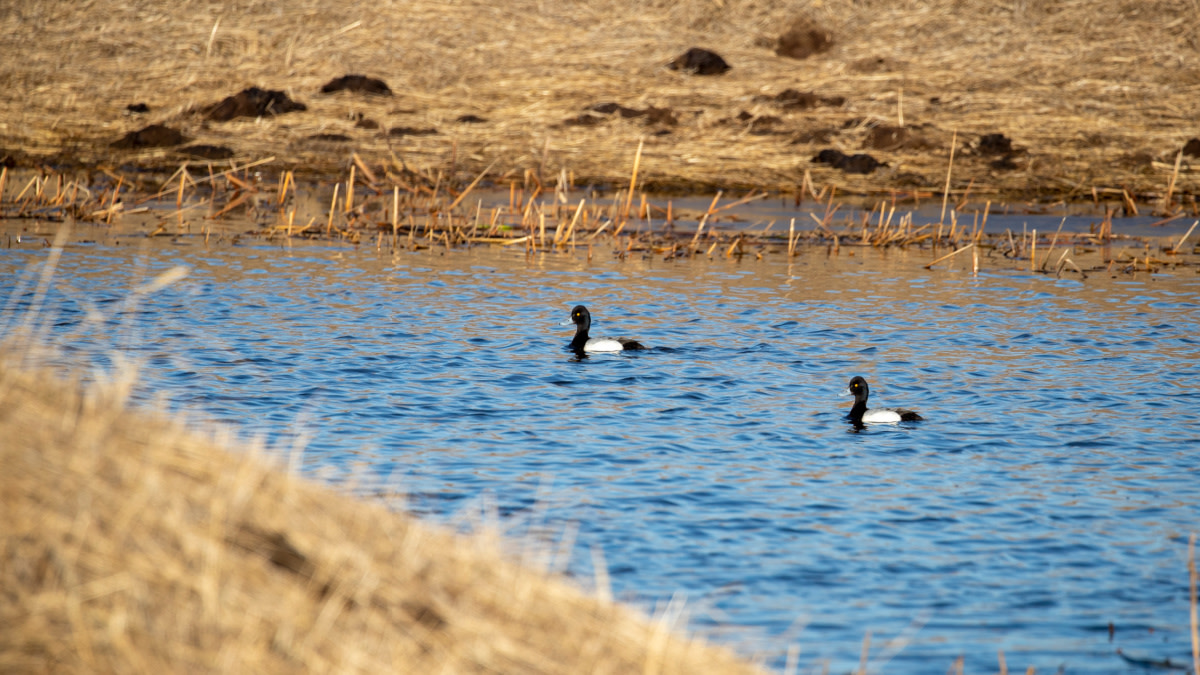
Whether in a field or on a lake, it’s hard not to love the sight of thousands of birds. But big numbers don’t always mean successful hunts, and oftentimes some of the best hunting can be on small water with low numbers of birds.
One of the best examples of small water is the standard cattle pond. Depending on where you live, you also might call this a stock dam or pasture pond. These are small, man-made reservoirs typically built for livestock use, and you can find them all across the country.
For Jake Curtis, a hunting guide in Kansas, these are one of his favorite locations to hunt. “One of the best ways to shoot dry feeding ducks is to find these transition ponds where they stop for water before the feed,” Curtis said. “This style of hunting is personally my favorite because of the strategy of fooling ducks in their most vulnerable part of their daily cycle."
Why Cattle Ponds Are Great There’s a number of reasons that stock dams are good duck habitat. In my opinion, one of the main attractions is that these ponds are typically out of sight and out of mind. The dams are commonly in naturally low-lying drainages, which makes them hard to see. And being in the middle of a pasture means the ducks get to avoid human contact. The result is birds that act comfortable and safe. They can sit on these ponds for weeks without being hunted, harassed, or even seeing a person.
Another reason is the available food. Like large reservoirs, cattle ponds go through the same cyclical water levels. Through the summer, water levels drop, allowing good forage to grow along the banks. Then, as the fall rains come, the ponds refill and give birds fresh access to flooded vegetation.
How to Hunt Pasture Ponds One of the most important things I’ve learned when hunting cattle ponds is that you can’t always try for home runs. Because of the size and nature of most cattle ponds, you need to be willing to hunt small numbers of birds and take the consistent hunting they usually bring. Cory Hext, a hunting guide in Oklahoma, has plenty of success with small numbers of birds.
“Growing up in a top beef-producing county in the country, cows and waterfowl hunting go hand in hand,” Hext said. “A hundred to 200 geese with puddle ducks is a cattle pond dream. But don’t let smaller numbers fool you; with a good hide, this can make a hunt.”
Generally, hunting cattle ponds is a pretty straightforward endeavor. Knowing where the birds are is the first step to a successful hunt. According to Hext, the scout is worth the reward on these hunts. “Putting miles on your pickup is something you can’t be afraid of,” Hext said. “Pasture pond hunts aren’t always everyone’s first go-to, but there are plenty of hidden gems when it comes to a simple pasture pond setup.”
Besides just pounding the gravel, you should look for ponds that are in close proximity to spots you know hold birds. I use onX and satellite imagery to look for areas with higher densities of ponds and water, giving me more ground to look at with each scout. Jake Curtis usually relies on birds from bigger roosts to expose their hideouts. “The best way to find these ponds is to follow ducks off of a roost where they will stage on these ponds,” Curtis said.
Once you’ve found the birds, you have to figure out your hide. Thanks to the effects of grazing, these ponds are usually slim on cover, and hiding on them can be a real pain.
“Cows eat most the cover, so good hides are rare,” Hext said. “Most hunts, we bring our own hide: square bales, build a bush, etc.”
If you don’t know what Hext means by “build a bush,” this is a tactic that’s seen lots of use in recent years and is simple but effective. First, set up your choice of an A-Frame-style blind near the pond. Then, cut as much thick and brushy cover as you can get your hands on. Cedar tree limbs, tumbleweeds, and even ragweed are all fair game. Color matching your surroundings is ideal, but the main goal is to create a bushy hide with no hard or defined edges.
Curtis echoes Hext’s use of bushy blinds. “When it comes to the hide, try to mimic your surroundings. But if a big bush is a presentable option, A-frames on the edge of the pond will do the job.
Once you’ve found the birds and figured out the hide, the last element is your decoy spread. From my experience, the more natural the better on small ponds the birds already want to sit on. Four or five dozen decoys are plenty enough, and I have my decoys scattered and loose to mimic relaxed birds.
Hext uses the same methodology. “I hunt with realistic spreads,” Hext said. “How I look at it, it doesn’t take much to coax birds into where they’re already comfy. I set a spread like I’m the first two groups of the morning, not like the whole party is already there and eating.”
Next time you’re out scouting for the mother of all duck feeds, think twice about passing up the cattle ponds you find along the way.




